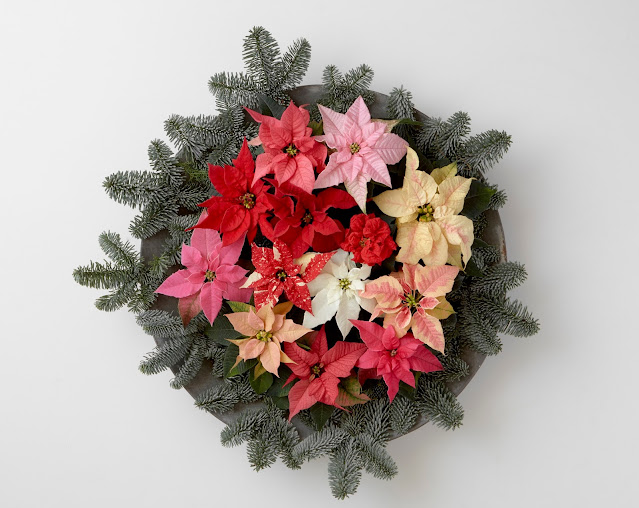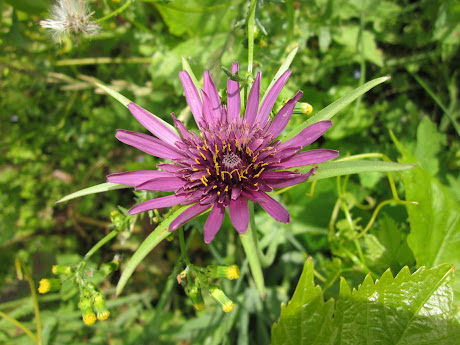Weekend wandering: A fresh look at Poinsettias
I've tended to pass poinsettias by in the run up to Christmas, but this tasteful display in a local florist's window during my recent wander around town made me pause and think again. They're quite an unusual plant, so here's a little more about them...
- They originally hail from Mexico, where they were valued by the Aztecs, who used them to decorate their temples and also thought they represented a new life for warriors who'd perished in battle. Another Aztec legend says the plants red bracts represents the blood of a goddess who died of a broken heart. This inspired the plant's French name, Etoile d’amour aka Star of Love.
- Poinsettias became more widely known following a botanical expedition to Mexico in 1803. It was named as a new species, Euphorbia pulcherrima by Johann Friedrick Klotzsch in 1834. The name poinsettia comes from Joel Roberts Poinsett, the first US official to Mexico, who was an avid botanist and brought it back to the United States in the 1820s.
- In Mexico poinsettias are also called Flor de Nochebuena aka Flowers of the Holy Night or the Christmas Eve flower. The star-shaped bracts are thought to represent the star of Bethlehem.
What we think of as flowers are actually bracts, modified leaves associated with the plant's reproduction process. The photo above shows the red bracts surrounding the tiny yellow flowers. As you can see they're quite small and inconspicuous, no wonder the plant 'decided' it needed more bling! To develop that rich colour, the plants need the right light conditions; at least 12 hours of total darkness (some sources say 14) followed by bright daylight each day for around 8 weeks. This explains why I've found it difficult to achieve the same effect for my plant the next year; I can't match the lighting regime the specialist nurseries have to bring them to Christmas perfection.
This colourful display wreath show there's a wealth of different colours and shades available these days. I like the idea of displaying them this way, though I know I wouldn't have the heart to cut the bracts off the parent plant myself. The way I've seen this done is to have small vials of water at the back of the wreath to help keep them fresh.
In the past I've found they need some care to keep them looking good for Christmas. Inspect the plant carefully before buying; any signs of leaf drop or wilting - no matter how small - probably means they weren't brought into the shop that carefully or aren't being looked after that well. Avoid like the plague (and those kept by a draughty shop door), there is little chance of making that sorry looking plant get better. Even a healthy plant needs some care to get it home safely, as my sad, tongue in cheek tale from a few years ago attests.
Once home, they like a warm, well-lit, draught-free place; but not lots of direct sunshine, or above a radiator. Water sparingly too, and your poinsettia will be well set to celebrate Christmas with you.
Thanks to Stars for Europe for most of the information I've researched and subsequently verified, plus the two later photos (one cropped) for this post. Note, I have received no compensation for their use.













I like the white ones. Do you know if the plants themselves vary in colour or is it to do with the conditions they grow them in that determines the colour they become.
ReplyDeleteHi Rob, the new colours are produced as part of an ongoing breeding programme, though I believe white bracts have also been found in the wild. I like the white ones too.
Delete